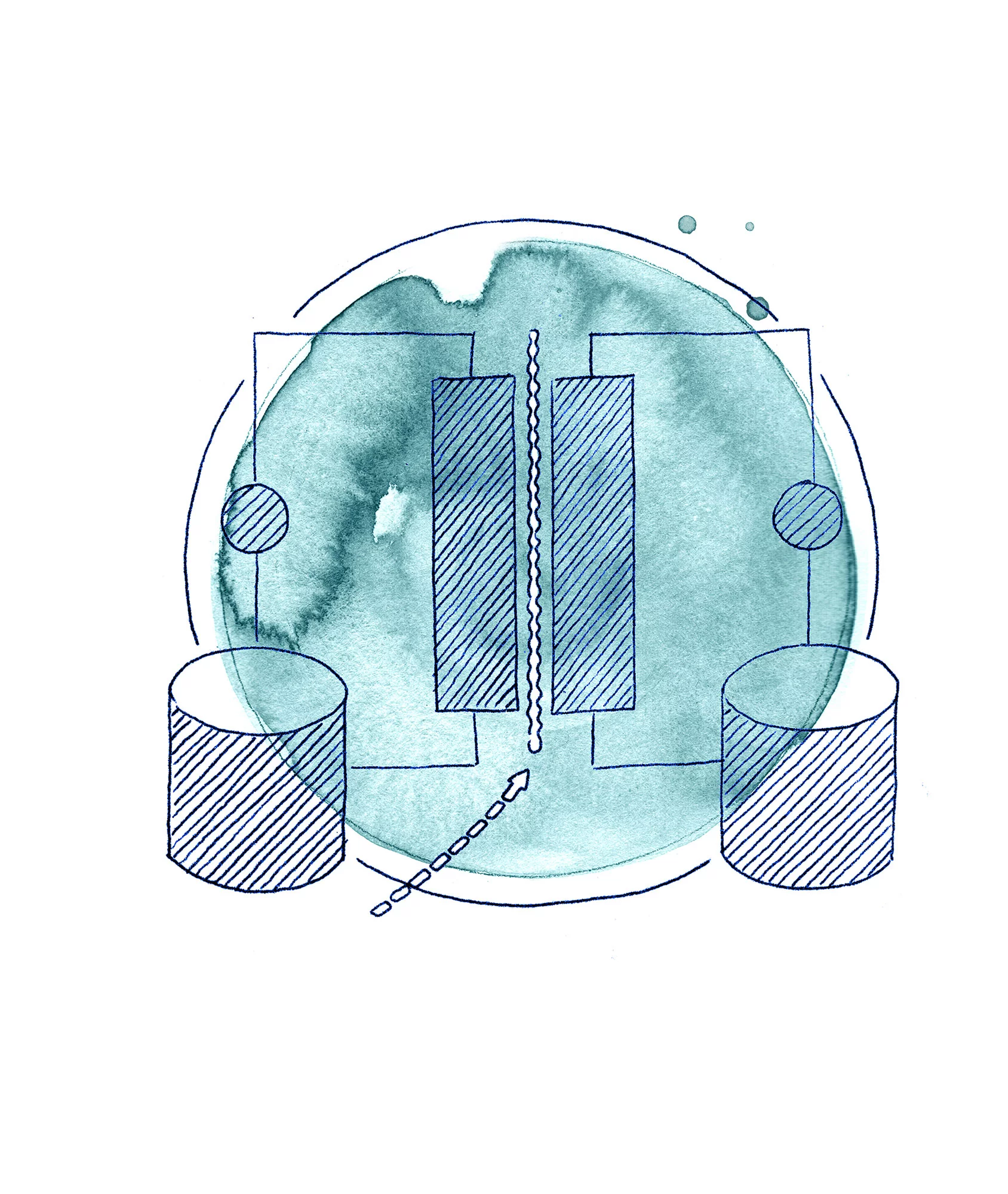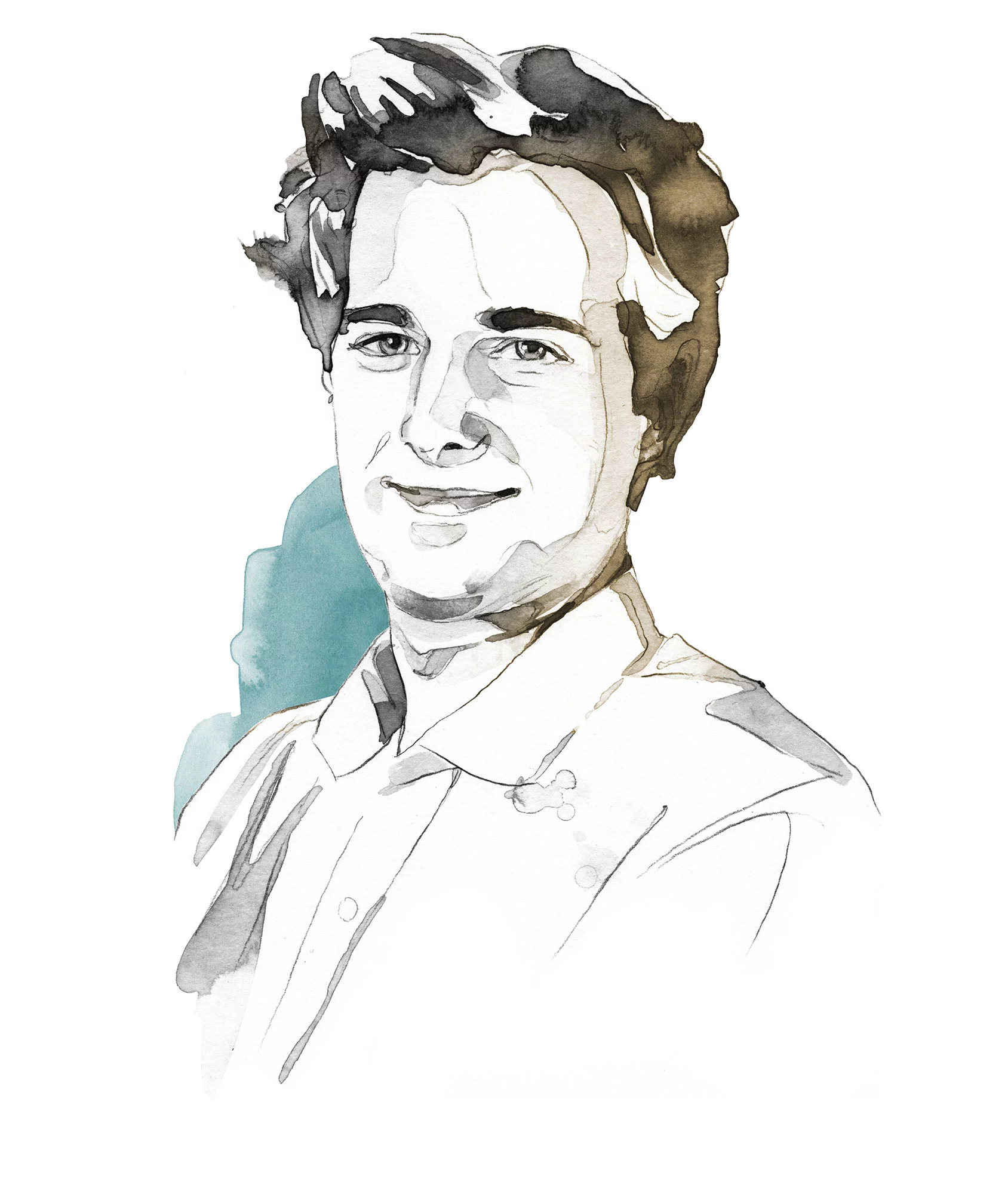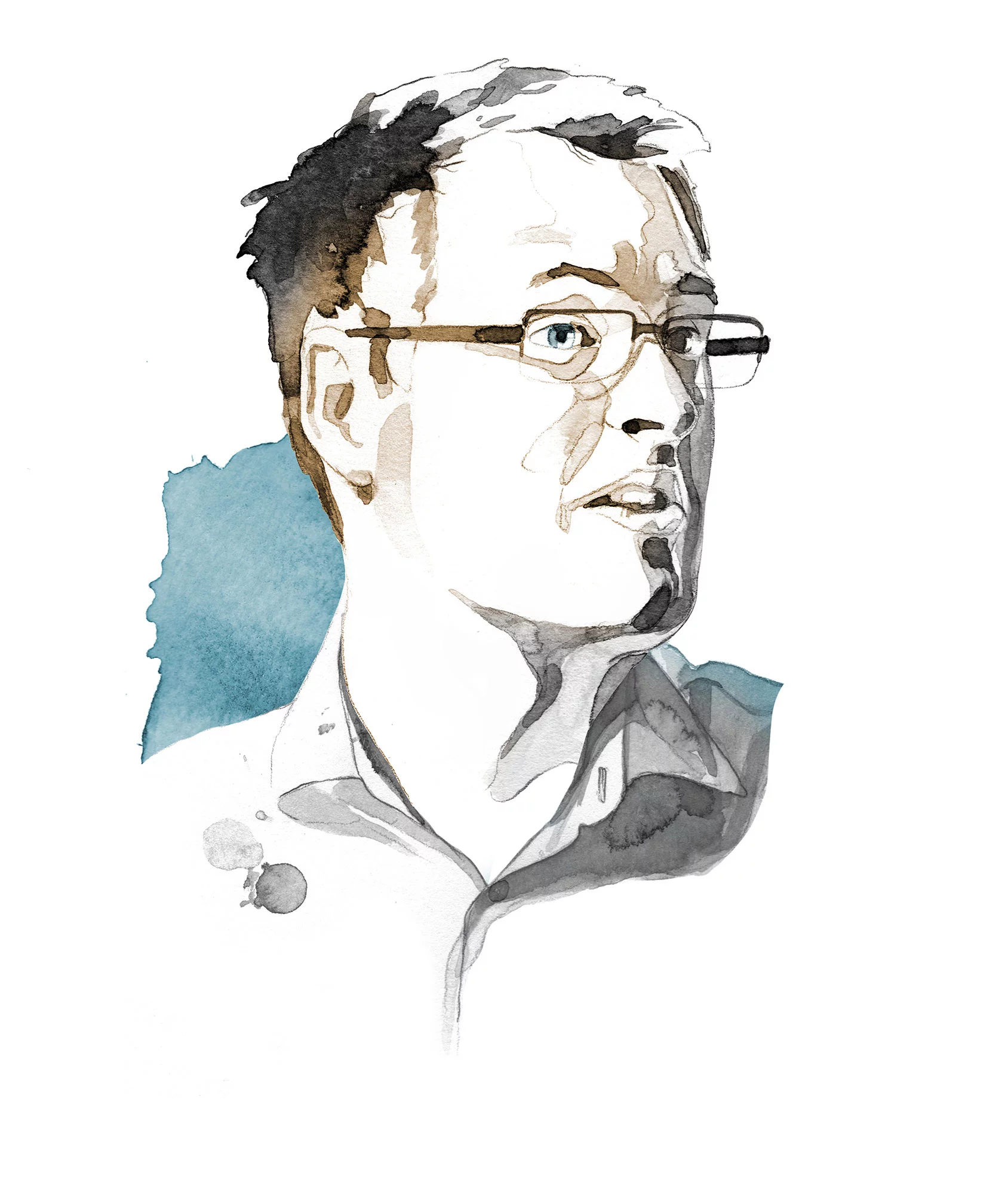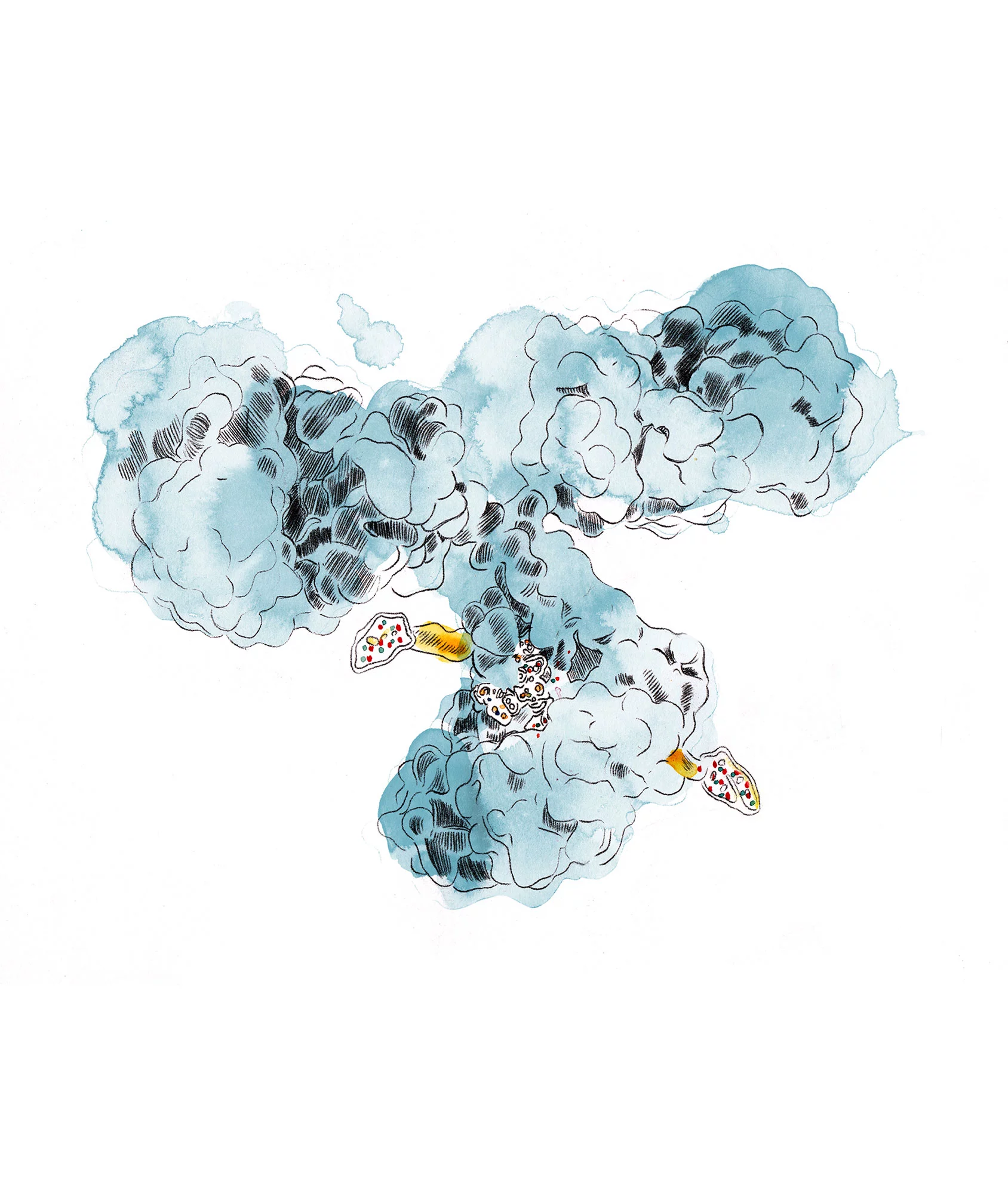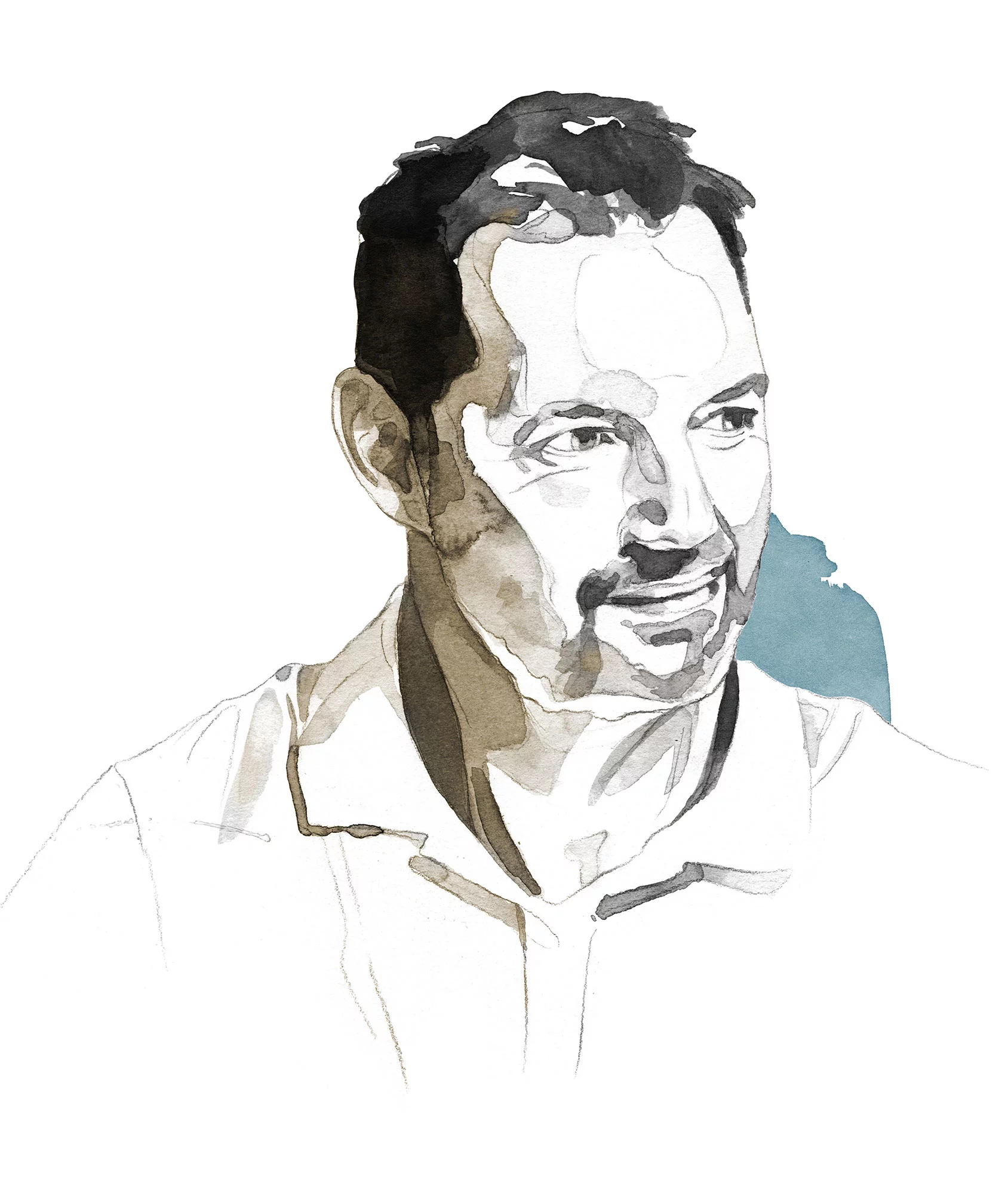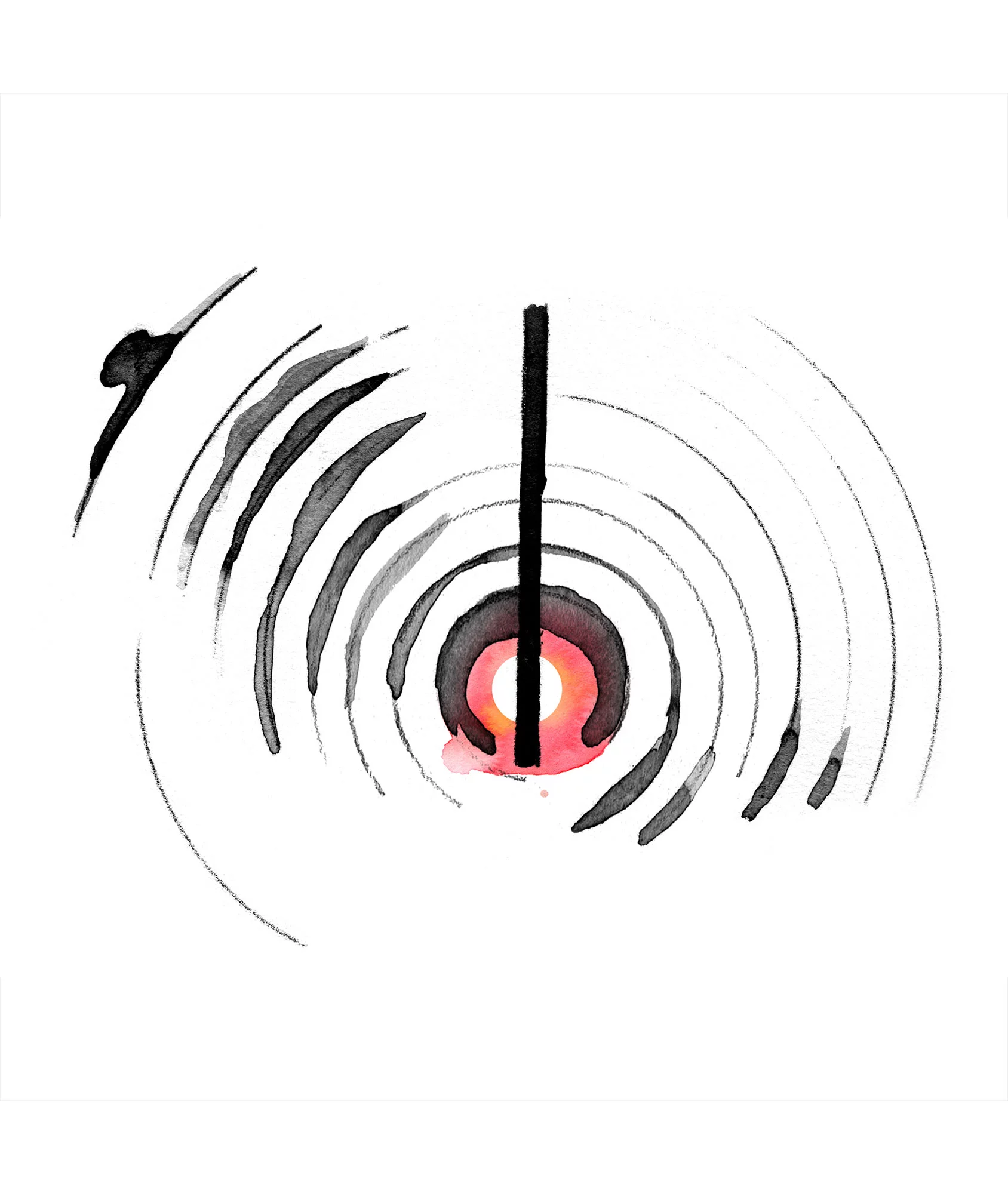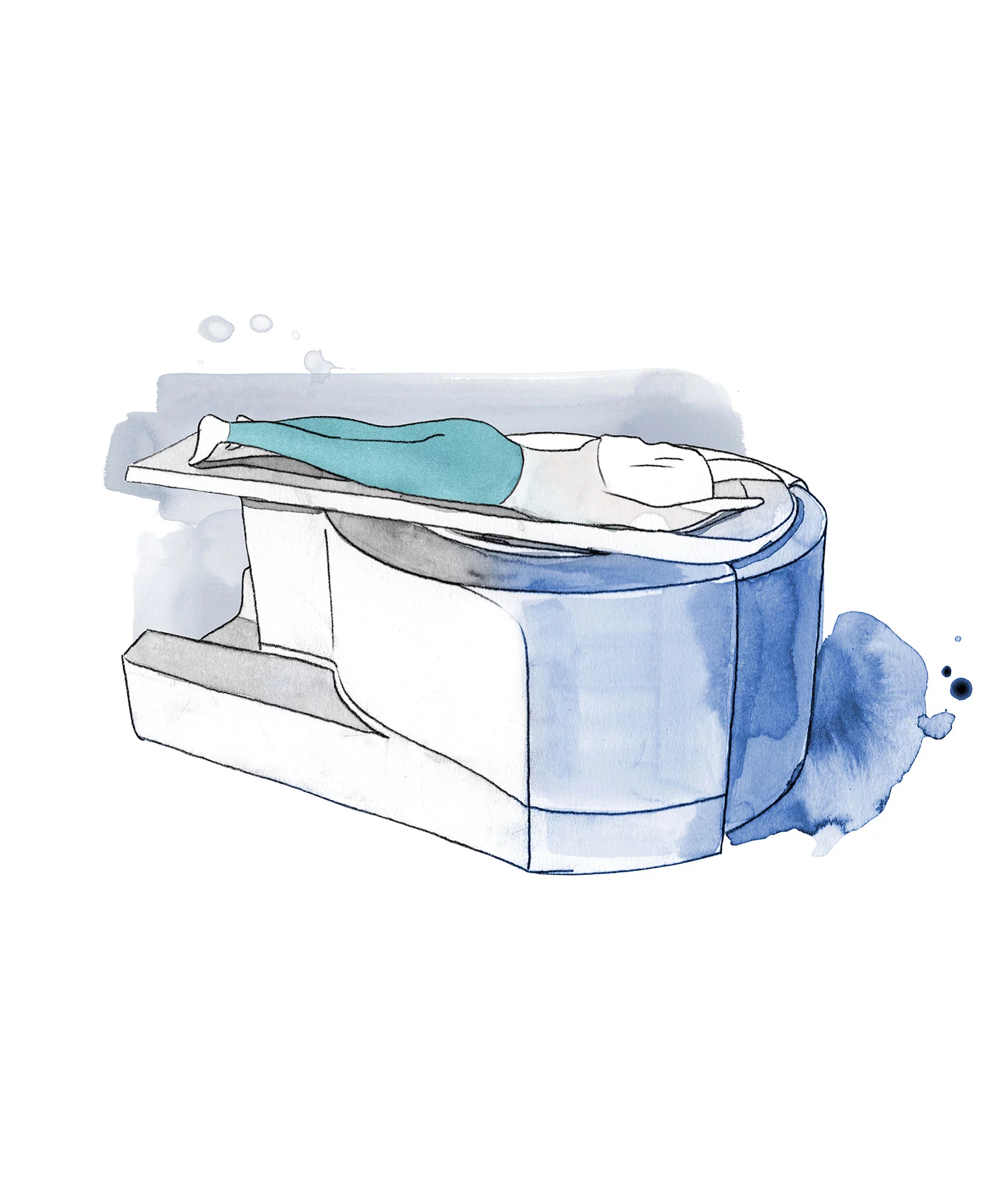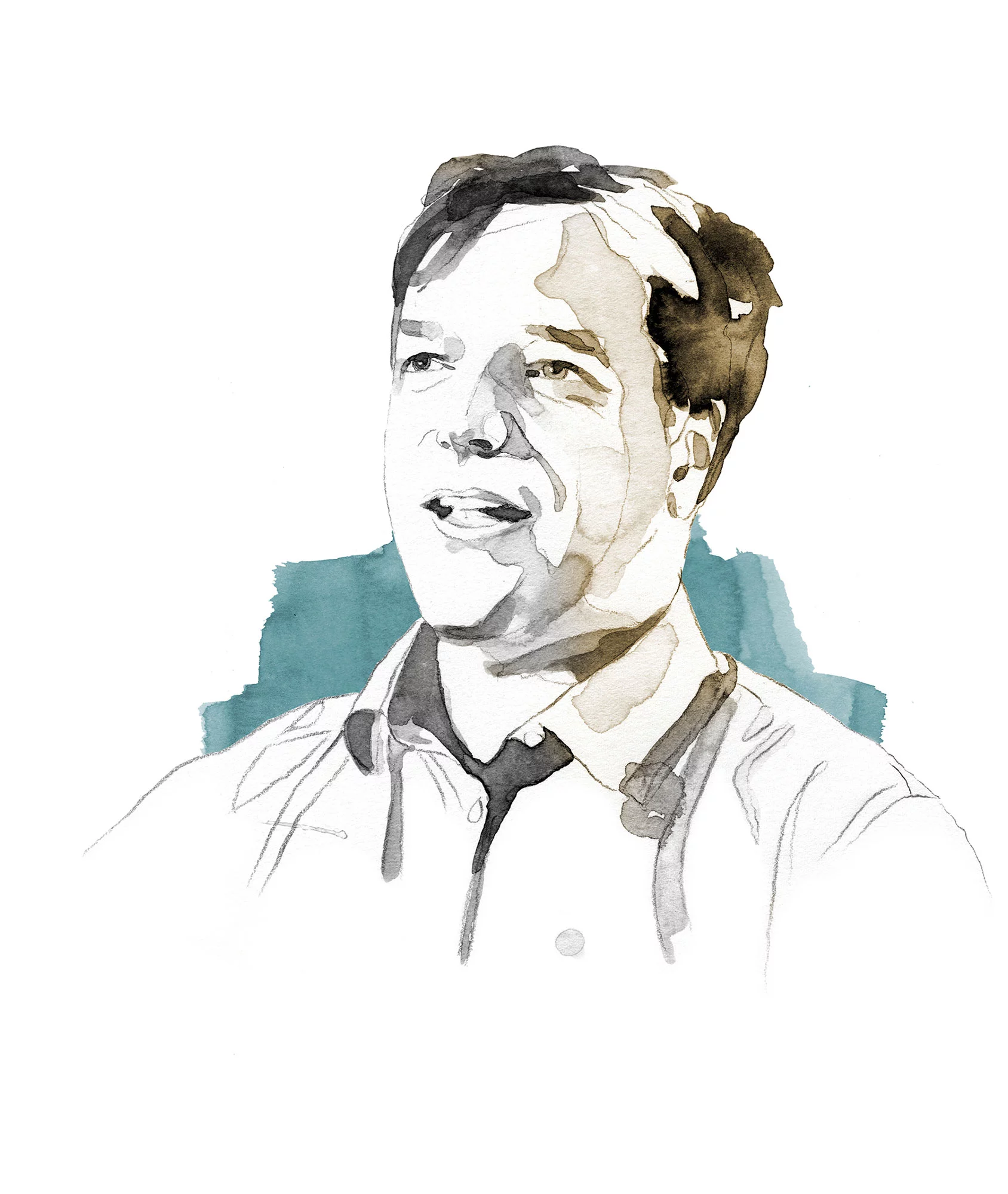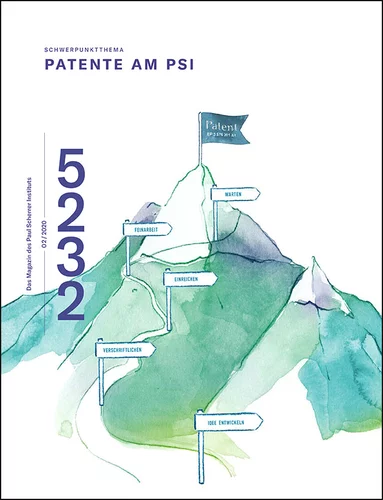At PSI, researchers develop innovative technologies, new biological agents, and more precise measuring instruments. Through this work they not only advance science, but also boost the Swiss economy. The best ideas are protected by patents and make PSI a sought-after partner for industry.
"In principle, it all started right here", says Fabio Oldenburg as he enters the Laboratory for Electrochemistry at PSI. The chemist and newly minted entrepreneur, with tousled hair and a fleece pullover, greets a laboratory technician who is busy with pipettes and test tubes. Oldenburg points to a black shelf with dozens of small glass tubes with red and white T-shaped plastic valves at the ends. "It was with tubes like those that I did my first experiments while I was a master's student and doctoral candidate", he recalls. Between these first tests and today lie four years, two patent applications, and the founding of a PSI spinoff company. The former PSI doctoral candidate has become an inventor and entrepreneur.
Atop the shiny metal table across the room stands an armature with two arm-thick, 50-centimetre-tall glass tubes that contain a clear, yellowish liquid. Inside each floats a gauzy, rolled-up veil. This delicate hint of nothing is a membrane made of polymers and the basis for Oldenburg's invention. If he rolled it out flat, each membrane would come to half a square metre in area. Soon this membrane is set to be installed in a rechargeable vanadium redox flux battery – VRF for short – and is expected to increase its energy storage efficiency by one-fifth.
The container-sized VRF batteries are located in wind farms or photovoltaic plants, where they store the megawatt-hours of green energy that accumulate during energy peaks due to weather conditions. "The future belongs to VRF batteries as rechargeable storage for renewable energy", Oldenburg is convinced. "The element vanadium is common and abundant, is non-toxic, and in the battery it is just dissolved in water. Unlike other technologies, these batteries don't require any rare raw materials or highly concentrated acids, they can be completely recycled, and they will retain the same charging capacity even after 20 years. The only disadvantage used to be their poor efficiency." And for that, the researcher has now found a remedy.
The idea for the new membrane came to Oldenburg while working on his master's thesis, when he was still studying at ETH Zurich. Sustainable energy solutions and green chemistry fascinated him, and he was looking for a research institute with extensive experience in this area – like PSI. There, Lorenz Gubler's research group had already been dealing with application-oriented energy research and membrane development for energy storage for more than ten years and was known worldwide for its expertise. These PSI researchers work with fuel cells, lithium batteries, and other storage devices and try to improve batteries' efficiency and storage capacity. The young chemist's assignment also pointed in this direction: He was supposed to investigate and optimise the ion-exchange membrane inside a VRF battery.
"VRF batteries work through the chemical interplay of different forms of vanadium", the researcher explains. "First I had to understand which form is transported in the battery and how it is dissolved. And then I adjusted the membrane accordingly." Membranes in batteries electrically separate the positive and negative poles. The electricity must therefore flow through an external load, such as a light bulb, to get from one pole to the other. At the same time, small charged hydrogen ions – protons – migrate through the membrane to maintain charge balance. However, this boundary between the two oppositely charged regions always allows some of the larger vanadium ions to pass through; this discharges the battery and makes it inefficient. The chemist changed the composition of his membrane in such a way that it would allow fewer vanadium ions and more protons to pass between the plus and minus poles, thus making the barrier more selective. For this purpose, he brought positively and negatively charged ions into the membrane simultaneously. And he did this in such a way that the different types of ions would not neutralise each other. This made the membrane more dense and the battery significantly more efficient.
Having reached this point, Oldenburg had the membrane tested by an industrial partner. The company was so enthusiastic about this advance that the researcher was inspired to found a start-up. On New Year's Eve 2017, he discussed the idea with a friend in London and persuaded him to join in the venture.
From the start it was clear to Oldenburg that he would have to patent the new membrane before founding a start-up. When he approached Adrian Selinger on PSI's Technology Transfer team, Oldenburg and his idea were welcomed with open arms. That's because patents are extremely important to PSI. They not only protect technology and know-how, but they also pave the way for industrial use and, with that, for licencing income or new research partnerships. Selinger, a chemist and engineer with many years of experience in industry, has also filed for patents himself. He quickly recognised the potential of the new membrane. "If an idea is to become a patent, it must have an element of novelty", Selinger explains. "The solution cannot be obvious, but rather must contain an inventive advance that represents a completely new creative thought. It was all there." Given these good starting conditions, everything else was just a formality. A few weeks later, on 21 May 2018, PSI registered the invention for a European patent. From that date on, no one could simply copy Oldenburg's formula. "We received feedback from the European Patent Office in Munich relatively quickly and had to reword some descriptions in the patent application", the researcher explains. "Now we have to wait until everything is checked and the patent is granted." This can take years. Therefore, the rule for patent applications is: File, forget, and carry on with "patent pending" status.
After his invention was registered, Oldenburg took up the idea of his own start-up and applied for a PSI Founder Fellowship. With this funding instrument, PSI supports its researchers on their path to the spinoff: Whoever wants to found a company that creates added value for the canton of Aargau and Switzerland, for example through jobs, can receive valuable knowledge and access to infrastructure as well as funding for 18 months. And so did Oldenburg. As a Founder Fellow at PSI, he gets coaching to help him learn the basics of entrepreneurship, he can use the PSI laboratories, and he has the security of a paid job. This comfortable situation eased his entry into entrepreneurship. Ten months after the first patent was filed, he and his London colleague founded the PSI spinoff Gaia Membranes. Since then, he has spoken to many potential customers and investors and designed a business model. With his knowledge and his own small team, Oldenburg is now developing the membrane further and making it suitable for use in large VRF batteries and for new applications. Becoming a businessman has not dampened his inventive spirit.
Inventions and patents have a long tradition at PSI. They cover almost all subject areas researchers are working in. In medicine, for example, there are patents covering examination techniques that are useful in proton therapy against cancer or for the detection of prions, the cause of mad cow disease. There are more photoscience, such as special lithography processes for structuring surfaces. In the environmental area, there are patented techniques for recycling rare earth substances, for catalysts, and for gasification of biomass. Still more examples can be found in materials science and in other areas. Since it was established in 1988, PSI has registered 250 patent families. A "family" includes all patents that can be traced back to a particular invention. The crux of the matter is the priority date – the day the patent application is submitted. It applies to all later registrations in other countries or languages. From that day on, an invention can be protected for 20 years. Can be, but need not be.
"PSI has around a hundred active patent families", Selinger says. "Active means the invention is still under protection. About 150 patent families are older or have not been renewed." No longer extending protection means saving costs, because from the third year or so, the fees increase and can quickly reach several tens of thousands of Swiss francs. PSI is happy to invest this if it means protecting its own key technology, or if a company is interested in commercialising a patent. Like the Lausanne-based company Debiopharm, for example. Through a text published on the PSI website, this company became aware of the active agent 177Lu-PSIG-2, which had been developed at PSI's Centre for Radiopharmaceutical Sciences. This active agent against one type of thyroid cancer had already been submitted for a patent and was therefore attractive for the pharmaceutical industry. Debiopharm licenced the active agent from PSI in 2017 and now wants to develop it further, under the name DEBIO 1124, to bring it to the point where it is approved and ready for the market. PSI scientists and Debiopharm are also planning future joint research projects in the field (see 5232 Issue 3/2019, page 18).
It takes a lot of experience to patent the right ideas and regularly check PSI patent applications and patents. The specialists on the PSI Technology Transfer team look at feedback from the Patent Office on patentability and patent quality and also keep an eye on the "market". Then they decide: Hold, sell, or drop. Nevertheless, Selinger says, "There is no patent we can be absolutely certain will be successful. Conversely, of course, PSI doesn't want to miss a chance to get an important patent. When in doubt, we would rather patent one more invention."
We can now attach active agents to antibodies better than before, so we can selectively deliver them to their target in the body.
Inventions protected by patents also help PSI's own spinoffs. With a licence agreement, the start-ups are allowed to further develop PSI technology and bring it to market. Like Oldenburg's Gaia Membranes, for example. Or like another PSI spin-off, Araris Biotech, founded in 2019 by former PSI researcher Philipp Spycher. Spycher is working in biotechnology. He is interested in new methods for coupling biological agents to antibodies more efficiently. These antibody-drug compounds are increasingly used as cancer drugs, because they ensure that a drug reaches the tumour cells in the body in a targeted manner, docks at the right place, and takes effect there. At PSI's Centre for Radiopharmaceutical Sciences, Spycher identified an enzyme that acts like a kind of glue in binding the active agent and the antibody together. This enzyme couples active agents to antibodies more rapidly and more selectively than conventional methods and is very versatile. PSI applied for a patent on Spycher's invention because the first pharmaceutical companies were already interested in the new process (see 5232 Issue 3/2018, page 14).
There are many parallels between the paths Oldenburg and Spycher have taken as inventors. Both have done research at PSI, Oldenburg as a doctoral candidate and Spycher as a postdoc, and each won a Founder Fellowship.
Now both are inventors and entrepreneurs. If their patents and start-ups are successful, that will spur on other researchers as well as attracting new interested parties from industry and research to PSI.
PSI patents have become indispensable in some areas of the economy. This includes technologies that can only be developed and tested in large research facilities such as PSI. One such example is detector technology for high-performance X-ray cameras, which allow materials to be probed at the atomic level. The first of these detectors were developed more than 15 years ago by PSI physicist Christian Brönnimann and his colleagues for the Swiss Light Source SLS, and the technology is protected by several patents. Today, Brönnimann is CEO of DECTRIS, the largest of all the PSI spinoff companies (see 5232 Issue 3/2018, page 10). He founded DECTRIS in 2006, and it now has more than 120 employees. The company is so successful with its products that, worldwide, more than 60 percent of all new protein structures are determined using DECTRIS detectors. The structures of coronavirus proteins and possible drug candidates are currently being investigated using DECTRIS detectors.
The patented technologies and the spinoff of Marco Stampanoni, head of the X-ray tomography research group at SLS, are also on the road to success. The physicist and ETH Zurich professor was instrumental in developing a key technology from PSI, protected by several patents, so that it can be used on patients. Originally developed to characterise synchrotron radiation, this lattice interferometry-based phase-contrast method is on track to become the gold standard for breast examinations in cancer screening (see 5232 Issue 3/2018, page 18). The trick here: In comparison to conventional medical X-ray imaging, the researchers use additional physical interactions between X-rays and body tissue, namely refraction and scattering. Where before, medical X-rays essentially produced shadow images, it is now possible to detect and identify structures in the breast such as nodules or microcalcifications in much more detail. Through a collaboration between PSI and Philips, the new technology has already been used in a prototype. Now the PSI spinoff GratXray, co-founded by Stampanoni, is further developing the patented method at Park Innovaare. The site of this new innovation park, in the immediate vicinity of PSI, offers high-tech companies an ideal location for their research and development work. Spinoffs and innovative companies appreciate the close connection with PSI and access to the large research facilities. There they are laying the foundation for further collaborations, successful technologies, and patents – as their predecessors at PSI have been doing for the past 30 years.
Text: Sabine Goldhahn

